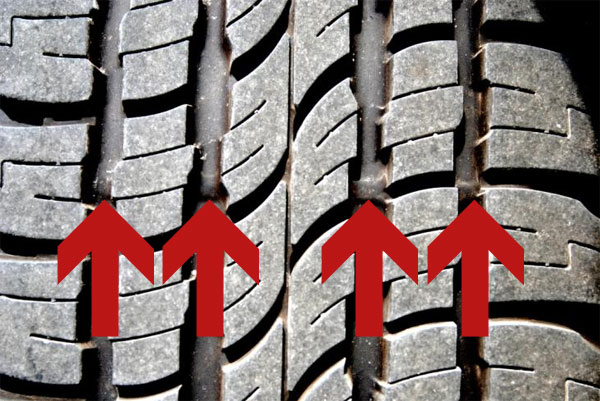Principles of Footwear & Tire Track Examination
The basic theory behind footwear and tire track analysis is that, much like fingerprints, shoes and tires may leave behind either prints (referred to as “imprints”) or impressions that can be examined by investigators. The type of evidence left behind depends largely on the type of surface traveled. For example, a shoe will leave an impression in loose sand, but on a hard surface like concrete or linoleum, it will leave an imprint. These imprints or impressions can be compared to a suspect’s shoe or a vehicle’s tire to determine if the shoe or tire is the same one that left the impression.
As shoes and tires are used, their physical features change over time. This is called wear, and is often reflected in the imprint or pattern left behind. In the case of a tire track, if a vehicle is out of alignment, the right front tire may be heavily worn on the outer edge, leaving a unique wear pattern. A forensic examiner can use that wear pattern along with the tread pattern and information gained from database searches to positively match that impression to the suspect’s vehicle.
During the examination of a crime scene or other location, if footwear or tire track evidence is found and collected, examiners can compare these unknown impressions to known impressions, impressions connected to other crimes and impression evidence stored in law enforcement databases. To do this, examiners use three main characteristics to analyze the imprints and impressions: class, individual and wear.
Class characteristics result from the manufacturing process and are divided into general and limited. General class characteristics include those that are standard for every item of that make and model. Limited characteristics refer to variations that are unique to a certain mold. For example, two tires of the same brand, model and size will have identical tread design and dimensions, but may have slight differences due to imperfections in the molds used during manufacturing.

Enlarged image of a tire tread shows characteristics unique to the mold used to create this tire (red arrows). (Courtesy of John Black, Ron Smith & Associates)
Individual characteristics are unique aspects of a particular shoe or tire that result from use, not the manufacturing process. These could be from damage such as a cut, gouge or crack, or a temporary alteration like a stone or twig stuck in the tread.
Wear characteristics result from the natural erosion of the shoe or tread caused by use. Specific wear characteristics include the wear pattern, the basic position of tread wear; the wear condition, the amount or depth of the wear; and where extreme, the damage to or destruction of the tread. For instance, the location and amount of tread loss on a particular brand and style of shoe will be different for each person wearing the shoe based on how and where they walk, and the length of time they have owned the shoe.

(Courtesy of NFSTC)
The FBI compiles and maintains the Footwear and Tire Tread Files database containing manufacturers’ information and information from previously submitted evidence. This information can be used by examiners or investigators to determine the brand name and model of shoe or tire imprints and impressions found at crime scenes. The National Institute of Justice also maintains a list of forensic databases.